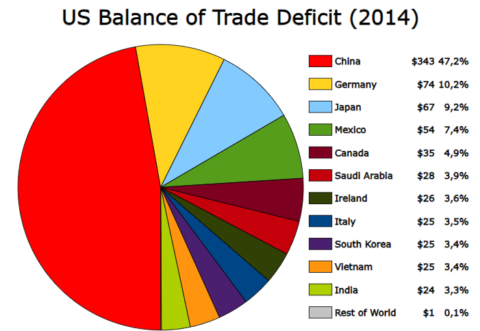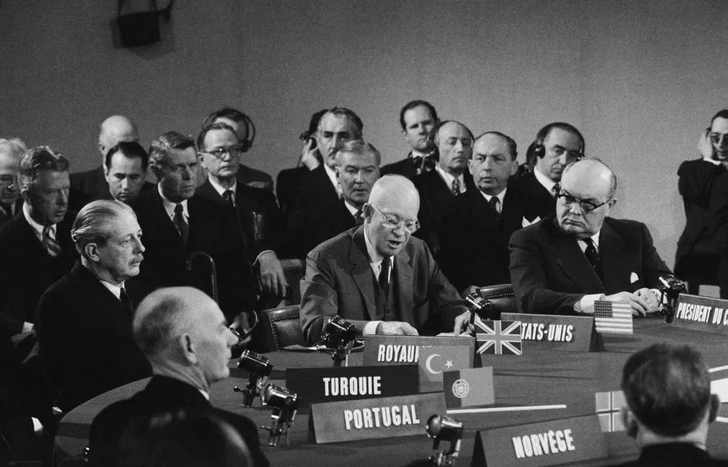PeriscopeFilm
Published Apr 16, 2024The ABC of Hand Tools (1945) is a Walt Disney Co. produced training and educational film for General Motors (GM) about proper use of hand tools. The film, which is in Technicolor, is fully animated and opens with a caveman character “Primitive Pete” seen inventing the first hand tool: an early model hammer made from stone with a stick handle. The film then goes on to elegantly show different types of basic hand tools such as the hammer, screwdriver, wrench, and pliers and show their proper uses, design elements and proper care.
Opening credits and title page, General Motors (GM) logo (0:07). Animation of various hand tools on blue background: wrench, hammer, saw, screwdriver (0:28). Various human innovations built using hand tools stretch out from globe: Golden Gate Bridge, radio towers, train (0:35). Stone Age: cartoon character caveman “Primitive Pete” uses earliest form of hand tool, stone tied to stick “Stone Age hammer” (0:58 – 2:12). Various modern day hand tools derived from Primitive Pete’s invention and shots of Primitive Pete misusing these tools: Ball-Peen Hammer design and proper uses of peen vs. face (2:24). Brass or copper hammer, raw-hide face hammer, plastic tip hammer, claw hammer (3:38). Details of design, uses of claw hammer (how to tighten hammer head, how to insert or remove nail using hammer head and claw) and Primitive Pete demonstrating how NOT to use the hammer (3:56 – 5:32). Ordinary screwdriver: Primitive Pete struggles to open window using screwdriver, however, he fails and only ends up ruining the tool (5:35). More information on the screwdriver which is made up of three principal parts: handle, shank, blade (6:00). Various size screws screwed into wood plank, demo on how to find proper blade for screw head size; Consequences of not choosing proper blade (6:44). Repairing blade head on shank if damaged; Front and side view of properly ground screw driver (7:37). Special heavy duty model screwdriver with extra large square shank; Primitive Pete damages screw driver by using wrench (8:19). Pliers: combination pliers, diagonal cutting pliers, long round-nose pliers, side-cutting pliers (8:50). Details of side cutting pliers design and uses: detailed how-to steps for using these pliers to make an electrical connection (9:09). Use of long round-nose pliers to make loop to fit a terminal (9:43). Use of diagonal cutting pliers for removing and installing cotter pins (10:01). Use of combination pliers: design elements (slip joint, shear) and uses (10:26). Wrenches and size range of wrench head (measurements refer to distance between jaws) (11:09). Primitive Pete demos bad wrench use followed by demo of proper usage (11:34). Open end wrench: adjustable jaw; Correct use of wrench; Proper care – keep tool well oiled (12:38). Medium sized monkey wrench: adjustable jaw for tight fit against nut; Proper use (13:35). Primitive Pete shown destroying tool by trying to force stubborn nut by hammering on wrench handle (14:11). Pipe wrench: how to use on pipes and other round objects, protective measures to prevent teeth marks (14:43). Box wrench: 12 notches in its head for good fit over nuts; head and handle offset at 15-degree angle (15:25). Combination box and open end wrench “half and half” (16:02). Boxes of socket wrenches: normal box set and one ideal for mechanic workshops which includes hinged offset handle, T handle, ratchet handle (16:23). Primitive Pete uses early model hammer against rock before film cuts to closing credits (17:40).
(more…)
July 26, 2024
The ABC Of Hand Tools (1945) – Tool Care & Handling
July 25, 2024
David Friedman on the economics of trade
David Friedman discusses how, for example, the US and China manage their trading relationship:

“United States Balance of Trade Deficit-pie chart” by Shirishag75 is marked with CC0 1.0 .
I recently read a thread about US/China trade on a forum occupied mostly by intelligent people. As best I could tell, all participants were taking it for granted that things that make it more expensive to produce in the US, such as regulations or minimum wage laws, make the US “less competitive”, increase the trade deficit, give the Chinese an advantage. Reading Project 2025, the Heritage Foundation’s battle plan for a future conservative president, I observed the same pattern, with only one exception.
It did not seem to have occurred to any of the forum posters that US costs are in dollars, Chinese costs in Yuan, and what determines the exchange rate between them is the cost of producing things. Discussing trade policy in terms of absolute advantage, pre-Ricardian economics, isn’t quite as bad as discussing the space program on the assumption that the Earth is at the center of the universe with sun, moon and planets embedded in a set of nested crystalline spheres surrounding it — Copernicus was about three centuries earlier than Ricardo — but it is close. It is a point that I made here about a year ago, but since the question came up in my most recent post and in a thread on my favorite forum, it is probably worth making again.
The Economics of Trade
It is easiest to start with the simple case of two countries and no capital flows. The only reason Americans want to buy yuan with dollars is to buy Chinese goods, the only reason Chinese want to sell yuan for dollars is to buy American goods. If Americans try to buy more yuan than Chinese want to sell, the price of yuan in dollars goes up, if Chinese want to sell more yuan than Americans want to buy, the price goes down, just as in other markets. The price of yuan in dollars, the exchange rate, ends up at the price at which supply equals demand, which means that Americans are importing the same dollar (and yuan) value of goods that they are exporting.
Suppose the US government, inspired by the mercantilist view that countries get rich by exporting more than they import, tries to produce a “favorable” balance of trade by imposing a tariff on Chinese imports. Chinese goods are now more expensive to Americans. Since they want to buy less from China they don’t need as many yuan so the demand for yuan goes down, the price of yuan in dollars goes down, which reduces the cost of Chinese goods to Americans. Just as before, the exchange rate ends up at a level at which the dollar value of US exports equals the dollar value of US imports. Both imports and exports are now less, since trade is being taxed, but the balance of trade is exactly what it would be without the tariff.
Suppose the US becomes less good at making things due to an increase in government regulation or some other cause. Dollar prices of US goods in the US go up. That makes US goods more expensive to Chinese purchasers so they buy fewer of them, decreasing the demand for dollars on the dollar/yuan market. The exchange rate shifts — dollars are now less valuable so their price falls. Trade still balances. The US is not “less competitive”, merely poorer.
Now add in more countries. One reason Chinese want to buy dollars is to sell them to Germans who want dollars with which to buy American goods. We end up with a trade deficit with China, since some of the dollars they get for their exports are being used to import goods from Germany instead of the US, but a matching trade surplus with Germany, since they are using both the dollars they get by selling things to us and the dollars they get from China to buy goods from us. The same logic applies with more countries.
To explain how it is possible for the US to have a trade deficit we now drop the assumption of no capital movements. One reason Chinese want dollars is to buy goods and ship them to China but another is to buy assets in America — government bonds, shares of stock, real estate. Dollars bought and dollars sold are still equal but exports of goods no longer equal imports of goods. Part of what the US is “exporting”, selling to foreigners, is assets located in the US.
Suppose the US government wants to reduce the trade deficit. One way would be to reduce the budget deficit, since if the US is borrowing less it will not have to pay lenders as high an interest rate, which will make US bonds less attractive to Chinese buyers. Another way would be to block capital movements, make it illegal for foreign buyers to buy US assets. Doing that, however, means less capital investment in the US, hence higher interest rates. With fewer lenders to buy US bonds, the government will have to offer a higher interest rate to sell them.
One argument sometimes offered for restricting foreign investment is that if the Chinese own a lot of US assets that gives them power over us. The same argument was offered in the early 19th century when European investors were paying to build railroads and dig canals in the US. Daniel Webster pointed out that, if there was a conflict with European powers, their assets were sitting on our territory under our control. It wasn’t like they could repossess the Erie canal.
What about imposing a tariff in order to reduce imports? The logic of the previous argument still applies — the exchange rate will shift to make imports more attractive, exports less. Any effect on the deficit will depend on what happens to the attractiveness of US assets to Chinese investors. Figuring out the net effect is complicated, depending in part on what people expect trade policy and exchange rates to be when they collect on their capital investments.
Poptimism?
Freddie deBoer has a few things to say about “poptimism” (whatever the heck that might be):
I mean, honestly, what are we doing here? Where does this go? When does the madness end? What degree of all-swallowing society-wide celebration of pop music might be considered sufficient, for pop fans? How much more slavish devotion can Taylor Swift engender before they stop calling her an underdog? What is the endgame? What level of delusion is yet to be achieved, in the space of pretending that pop music is somehow marginalized or disrespected? This is, I’m told, “pop girl summer“, and it is genuinely difficult to find new music that gets any burn that isn’t some 18 to 28 year old photogenic woman, autotuning over shlocky overproduced midtempo backing tracks complete with beats stolen from mid-2010s EDM and muddy indistinct synth lines that all sound exactly the same. (Jack Antonoff should be put to death for his crimes.) My friends: you get all the streams, you get all the good reviews, you get all the Grammys, you get all the magazine covers. There exist almost no mainstream publications that regularly cover any music other than the kind you like. If anyone uses words like “authenticity” in music criticism, they will be sent to the gulag; if anyone suggests that musicians who write their own songs possess some sort of intimate connection to them, that person receives the digital equivalent of being pressed to death like Giles Corey. What more adulation do you want for your stars? What additional level of respect is there for them to secure? What do you want?
NPR says “This summer’s music charts are dominated by pop girl underdogs”. Underdogs cannot dominate! Definitionally! If they are dominating, they are not underdogs! This is the modern hell of crybullying, the person who tells you that you’re oppressing them while they’re busy mashing your face into the asphalt.
And, of course, it’s mostly all a negotiation with aging. As one of the oldest Millennials, I’m watching as my generation reaches middle age and reacts to that transition, and I can give you an initial verdict on how it’s going: not well, at all. We’re mostly adjusting to it by not adjusting to it. So, so many Millennials are confronting the end of their youth by performatively embracing youth culture, loudly declaring that the only music that matters is that which you discover on TikTok. They need everyone to know that they’ve spent the cost of a new Toyota on tickets to the Eras Tour. (Which soaks up seats that might otherwise be available to actual young people, not wine moms with too much money, but nevertheless.) They might like music. But in a much deeper way, they need it. They need what they think it represents.
Of course, this is all made a little bleaker by the fact that elder Millennials were once defined as the “hipster” generation, Williamsburg residents swilling PBR at backyard parties where they listened to the latest indie darling. In other words, they — we — have gone from being ostentatiously countercultural to ostentatiously mainstream, in the span of twenty years, which makes it hard not to conclude that they — we — never actually had aesthetic tastes at all and have instead lived like little reeds in the wind, terrified of ever appearing to not be The Right Kind of Person, which can only ever be defined through our capitalist consumption, since we think that all we are is our capitalist consumption.
M14: America’s Worst Service Rifle – What Went Wrong?
Forgotten Weapons
Published Apr 15, 2024While the US never adopted a significant variation of the M1 Garand (excluding sniper models), testing continued on new iterations and features throughout the war. By the time the war ended, the US military had some specific ideas about what it wanted in a new service rifle. That being, something lighter, capable of automatic fire, and to have one single platform replace the M1 Carbine, M3A1 Grease Gun, M1 Garand, and M1918A2 BAR. New rifles to meet these requirements were developed by Springfield, Remington, and Winchester, ultimately competing against the FN FAL for US service use. The Springfield T44E4 won out (barely) and was adopted on May 1, 1957 as the M14 rifle.
Production of the M14 was plagued by problems, largely due to quality control lapses. Early in production there were heat treatment problems that led to sheared looking lugs and broken receivers. Once those were addressed, the main problem became one of accuracy, with a shocking number of M14s failing to meet the 5.6 MOA minimum accuracy standard. Ultimately production ended in 1963 with 1.38 million M14s produced, and the M16 took over as the new American service rifle.
(more…)
July 24, 2024
The Korean War – The Allied Cluster f**k at Taejon – Week 005 – July 23, 1950
The Korean War by Indy Neidell
Published 23 Jul 2024Taejon falls this week to the advancing North Korean steamroller, but the fight there is complete chaos that even sees the top American General fleeing into the local hills. However, two divisions of American reinforcements have arrived and perhaps they can turn the tide. The US also has decided to massively increase its defense spending and conscript tens of thousands of men, which may well help to do that.
(more…)
Investigate one assassination attempt, reveal the truth about two earlier assassinations?
I have to admit that I’m skeptical about this, as conspiracies tend to unravel the larger they get (hence the old joke about three being able to keep a secret, if two of them are dead), and the tradition of deathbed confessions has had six decades to reveal itself. However, Benjamin Dichter thinks that a full, honest investigation into the attempt on Donald Trump’s life in Butler, PA would also yield historical dividends on the assassinations of JFK and RFK in the 1960s:
On July 13, 2024, both tragedy and an iconic photograph in American political history emerged from the attempted assassination of the 45th president. Even the harshest critics of Donald J. Trump among the legacy media were forced to acknowledge the moment, which many believe has cemented President Trump as an American icon. This failed assassination has become one of the most pivotal moments in American history, akin to tragedies such as 9/11, Pearl Harbor, and the attempted assassination of Reagan. It is rapidly emerging as a unifying moment for many Americans, signaling that the media’s rhetoric and repeated attempts to label Trump as a dictator, a neo-Nazi, and other unsubstantiated vitriolic claims have gone too far.
Donald Trump, surrounded by Secret Service agents, raises his fist after an attempt on his life during a campaign speech in Butler, PA on 13 July, 2024. One spectator was killed and two others were reported to be in critical condition. The shooter was killed by Pennsylvania State Troopers, according to reports in the succeeding hours.
As a Canadian who has spent much of my life traveling to the US, I have always sensed an underlying, unresolved collective emotional trauma that lingers like morning fog. This trauma stems from the assassinations of President John F. Kennedy and his brother Robert F. Kennedy — both murders believed by the majority of Americans to remain unsolved. More on that in a bit.
A friend of mine, working with the Department of Defense in the domain of security readiness for the US government, has told me the level of incompetence and fumbling of security obligations during Trump’s speech in Butler, PA, was inconceivable. He is not one to be hyperbolic, and we are both believers in Hanlon’s Razor. However, after his long career in the military and then at the Department of Defense, where he learned there is no shortage of incompetence due to government bureaucracy, he insists that the most basic protocols were violated in this case.
How is it possible that anyone could get within 125 yards of a former President and current candidate with a rifle? Not just a small pistol hidden in a pocket, but a large AR-15 platform rifle. “The idea that this could happen uncoordinated is absurd” he said. Even the legacy media is unable to spin their usual ridiculous deflections, which often appear like a frenzy of spawning sharks whenever President Trump is in their midst.
The gravity of this situation has changed everything and heralds a dawn of opportunity for America. For Trump, it is a chance to show the world how the gears of the machine turn. How things really work behind the scene. He is presented with a massive opportunity to seek retribution on behalf of the American people, who are still grappling with unresolved issues from past traumas.
Unlike the tragic assassinations of JFK and Robert F. Kennedy, Trump survived and will likely return to office. Also caught in the chaos were innocent bystanders, notably Corey Comperatore, who sacrificed himself by shielding his family from gunfire, along with two other victims whose injuries were not life-threatening. The innocent victims and their families who will vote in November, make this a situation that hits home with many Americans regardless of party affiliation.
July 23, 2024
Claim – “Everybody wants Gaza’s gas”
Tim Worstall explains why the popular idea that it’s demand for the natural gas reserves that sit under Palestine that is driving much of the situation in the Middle East is utter codswallop:

“Oil Platform in the Santa Barbara Channel, California” by Ken Lund is licensed under CC BY-SA 2.0 .
So we’ve a big thing about how all this fighting in Gaza is really about fossil fuels. @JamesMelville seems to think it’s true:
“Everybody wants Gaza’s gas.”
Oil and gas reserves – that’s the real proxy war in the Middle East.
This video provides a really succinct summary of the situation.
This “really succinct” summary includes the idea that the invasion of Iraq was all about access to that country’s oil. Which is very silly indeed. Before the war people paid Iraq for the oil. During the war people paid Iraq for the oil. After the war people are paying Iraq for the oil. The war hasn’t changed Iraq’s oil price — the global oil price has changed it, but not the war — and so the effect of the war upon access to Iraq’s oil has been, well, it’s been zero.
No, it’s not possible to then go off and say that Iraq wouldn’t sell to Americans and that’s why or anything like that. The US didn’t buy much Middle East oil anyway — mainly West African instead. But more than that, this is idiocy about how commodity markets work.
This is something we can test with a more recent example. So, there are sanctions on Russian oil these days over Ukraine. Western Europe, the US, doesn’t buy Russian oil. Russia is still exporting about what it used to. Because it’s a commodity, oil is.
What’s happening is that the Russian oil that used to come to Europe now goes to — say — India. And the Far East, or Middle East, whatever, oil that used to go to India now comes to Europe (the US is now a net exporter itself). Because that’s what happens with commodities. The very name, commodity, means they are substitutable. So, if one particular source cannot sell to one particular user then there’s a bit of a reshuffle. The same oil gets produced, the same oil gets consumed, it’s just the consumption has been moved around a bit and is now by different people. The net effect of sanctions on Russian oil has been, more or less, to increase the profits of those who run oil tankers. Ho Hum.
We’re also treated to the revelation that the US wants everyone to use liquefied natural gas because the US is the big exporter of LNG (well, it’s one). Therefore the US insists that Israel must develop the LNG fields off Gaza. Which is insane. If you’re an exporter you don’t want to start insisting on the start up of your own competition. The US demanding that the LNG not be produced at all would make logical sense but that’s not how conspirazoid ignorance works, is it? It has to be both a conspiracy and also a ludicrous one.
And a third claim. That this natural gas off Gaza is really worth $500 billion. That’s half a trillion dollars. We’ve looked at this value of gas off Gaza claim before and it’s tittery. $4 billion (that’s four billion, not five hundred billion) might be a reasonable claim and that’s just not enough to go to war over.
July 22, 2024
Kamalamentum
On Sunday, Joe Biden announced that he won’t be seeking the Democratic Party’s presidential nomination after all and that he supported Vice President Kamala Harris as the party’s best chance to win in November. Mark Steyn comments:
So Biden gets served the Ultimate Anyway, and we are now supposed to get excited about which white-male governors in the Democrat Party are willing to challenge the first female … first black … first “Asian-American” … first Montreal schoolgirl … first Canadian since Chester Arthur to be nominated for president.
Oh, no, wait — he wasn’t nominated; he succeeded after the incumbent was assassinated. Hmm.
If anyone thinks this is the last plot twist, you’re forgetting we’re in the final seasons of Dynasty here — the Fallon-abducted-by-space-aliens Moldavian-massacre phase.
[…]
There are a lot of voters who like the Higher Bollocks Kamala can slough off so effortlessly. The stuff about working together to understand where we are can, in the right hands, be an appealing simulacrum of profundity. Particularly when sluiced through the court eunuchs of the Washington press corps — the same guys who’ve been telling us these last couple of weeks that the Democrat bigshots are at war with each other and have no consensus on the way forward, rather than merely doing a bit of dime-store melodrama while implementing the plan predicted way back at the dawn of the Biden Era by Diane Calabrese.
There seems to be a lot of coordinating for a Sunday afternoon. The Clintons have already endorsed Kamala, and the Biden campaign finance chair has already moved on:
Please give what you can today (money given here will be used 100% to elect Kamala Harris President).
And, just to put this in a global context, Joe’s farewell message sounded a lot to me like a demented version of Liz Truss, British prime minister for twenty minutes. You can’t tell the palace coups without a scorecard: Liz, weeks after winning the Tory leadership, was taken out by “the markets”; Biden, weeks after winning the Democrat nomination, was taken out by the donors (“No more dough until no more Joe“). There’s a lot of it about, don’t you think? You’d almost get the impression “elections” are just boob bait for the rubes …
Still, let us shed a tear for the latest guy to be written out of the soap. It’s only a few weeks since MSNBC’s Joe Scarborough was hailing the alleged commander-in-chief as “intellectually, analytically … the best Biden ever“. Then, tragically, the analytical genius came down with Sudden Overnight Dementia Syndrome. Because that’s the world we live in: Long Covid, drive-thru dementia.
Biden now assures us that he’s going to finish his term — which would be a novelty as, in terms of putting in a full day’s work, he’s never really started it. But we shall see. I’ve said before that it would be greatly to Kamala’s advantage to run as the incumbent.
That’s still the way to bet.
“Dissident Christianity”
While I don’t have a god in this fight, I find much to agree with Fortissax here as he responds to another writer’s commentary on modern western Christianity in an essay he titles “Spiteful Mutant Christians“:

Dijon viewed from Saint-Bénigne Cathedral with the Palace of the States of Burgundy, the Notre-Dame and Saint-Michel churches, the Saint-Nicolas tower, the former Saint-Bénigne abbey palace (ENSA), The Lafayette galleries, the old department stores at Le Pauvre Diable and la Ménagère.
Photo by Twibo2 via Wikimedia Commons (caption translated by Google Translate).
Admittedly, I’m not a fan of the majority of Christians on the right, particularly traditionalists on Substack. Before I open a salvo on them, I will say many of them are educated, well-written, and well-spoken. Many of them are respectable, as far as I know, often fathers of many children, who aspire to virtue. This is certainly better than a great many. Many of them have been in this business far longer than I have. Many of them are intelligent and offhand I enjoy many of their general insights. Overall, I wish them no ill will.
However, I’m inclined to believe they’re mostly out-of-touch, often Generation X or elder Millennials who caught the last chopper out of Vietnam and fundamentally don’t understand the socioeconomic or cultural reality of younger Millennials or Generation Z. Who are colourblind by their narrow fraternal environment of American ruralite post-postmodern Christians who seldom interact with people outside of their pseudo-collapsitarian communities. I say “pseudo” because they’re not crazed Libertarian doomsday preppers building bunkers with a hand shovel in the backwoods of Montana, but I’ve observed that the Christian Traditionalist tendency is “Quietism”. From what I understand about Quietism, this is the Christian tendency to be pacifistic, avoid all confrontation, completely abandon North American cities, urban or civil life, and retreat to what is a romanticist fantasy of pastoral agrarian landscape of isolated God-fearing communities, have a pint, and wait for this to all blow over. They’re convinced of the moral, ethical and philosophical superiority of their rural life, an desperately wait for the day they can starve the city boys out.
On that note, the worst and most obnoxious of them are former city slickers or suburbanites who move to the countryside, but that’s an entirely different argument, and I’m getting sidetracked. Perhaps my biggest criticism of the Christians is that they are extremely presumptuous people in “this thing we call” the Dissident Right.
They piggyback off the remnant adherence and nominal identification to Christianity among the irreligious populace who, if they attend church at all, attend churches that are completely captured by the deistic DEI God of Equity. They pretend their super-ultra esoteric Pageau Hermetic Catholicism, Christ-is-King MAGA communist groyper Christian “nationalism”, or “based warrior priest” Eastern European war footage Orthodoxy is the norm. They pretend that the bumbling Christian faithful know or understand half of what they discuss on Telegram, X, or Substack, and this gives them a false sense of security and inevitability. They speak with a false confidence that, to outsiders, would appear that they’re truly in the know, that everyone is in fact Christian, and it’s only a matter of time before everyone else is. This is completely out of touch with reality. If you look at who is Christian and who isn’t, you start to see the brutal picture. For simplicity’s sake, we will focus on North America and Western Europe, with the dividing line being the old NATO boundaries. Let’s break down the facts:
In 2024, the following percentages of national populations identified as Christian
- Portugal: 84.8%
- Italy: 83.8%
- Denmark: 79%
- Norway: 76.7%
- United States: 65% (Pew Research Center)
- Belgium: 65%
- Canada: 53% (Pew Research Center)
- Spain: 67%
- Switzerland: 58.2%
- United Kingdom: 59%
- Germany: 57%
- Netherlands: 43%
- France: 63% (Pew Research Center)
On its face, you’d be inclined to believe that the majority of the Western world is Christian: God-fearing, church-going, has read and understands the Bible, and partakes in a community, correct? Wrong. The overwhelming majority of people who identify as Christian don’t go to church, and this is explained by baptisms at birth or early life inductions that never lead to anything. The real percentage of practising Christians is as follows, with Portugal hilariously being not even a quarter of what it claims, despite having the highest rate of identification.
In 2024, the following percentages of national populations regularly attending church.
- Portugal: 19% (Catholic News Agency)
- Austria: 14% (Catholic News Agency)
- Spain: 13.4% (Wikipedia)
- Italy: 20% (Catholic News Agency)
- Germany: 9% (Catholic News Agency)
- Netherlands: 7% (Catholic News Agency)
- Switzerland: 5% (Wikipedia) (BFS Administrations Website)
- France: 5% (Catholic News Agency)
- Belgium: 5% (Catholic News Agency)
- United Kingdom: 5% (Catholic News Agency)
- Canada: 5% (CareyNieuwhof.com)
- United States: 24% (weekly attendance) (ChurchTrac) (PRRI)
- Norway: 3% (Catholic News Agency)
- Sweden: 3% (Catholic News Agency)
- Denmark: 3% (Catholic News Agency)
I was technically baptized Catholic, specifically because it was believed that I’d have greater access to educational opportunities, and not out of any genuine piety. I was given a choice at 3 years old to go to my first communion or watch Power Rangers. I’ve never read the Bible, save for two versions of half the book of Romans before putting it down, incredibly unimpressed with Paul failing to sell me on Christianity. My family has been irreligious for four generations. My province of origin, Quebec, is the most secular part of North America, and I’m proud of it. I don’t believe we can sever the influence of Christianity completely, and I don’t think we should. It is an integral part of our heritage, and we need to respect it. You can’t claim to honour your ancestors, or even western history without honouring Christianity. I do however believe that secularism gave the West an opportunity for a clean enough slate to find the definitive, ongoing unraveling of Truth. I chose hero worship. No honest person would say this makes them a Christian.
The purpose of bringing up these statistics is to perform a reality check. Christians are not the majority. Not in the general population, and not in the Dissident Right. Christians do not have a monopoly on morality. Christians do not have a monopoly on Truth. Christians completely lack the social capital and popular consensus to instigate the social policies they want in accordance with their faith on a civilizational scale. I believe that part of the issue is that the discourse is civilization-wide, but most of the Christianity is coming from North America, specifically the United States of America, where it represents a small and dwindling political faction of a broader conservative movement. There is not going to be a Fifth Great Awakening — their latest awakening as Greene himself would admit, is Wokism. A deistic Christian heresy. The public is not going to kneel, convert to disparate, squabbling denominations of Christianity marching in lockstep with Regimevangelicalism.
Blue Checkmark Christianity™ has recently signaled a green light to the millions of Global South Catholic faithful that it’s okay to illegally migrate to and trespass in Europe. The Hierophant has ordered His faithful to abide.
The fact of the matter is that Dissident Christians are a minority of a minority — they’re the equivalent of Sikhs in India. One percent of the population, and yet one loud, obnoxious voice giving all the impression they’re a bigger majority than they are. Christians like Misanthrope are as barely relevant as the degenerate neopagans and their profligate made up religions with zero legitimacy or antiquity. Hiding their views from their pastors, priests and the rest who attend their churches. It is an absolute LARP to speak with the audacity and arrogance that they do to the great secular majority, and or other groups who are attempting to cultivate faith with sincerity. You’d think if their truth was so self-evident, they’d be winning a whole lot more people, and the West would be Christian, but no. They’re going out the same way Zoroastrianism did, and after that, Hellenism, the state religion of the Roman Empire. Weak men, wicked priests, irreligiosity, bureaucratization of the liturgy, heretical reinterpretation of the word. I could go on.
July 21, 2024
“Since 2012, NATO has experienced a revival and a return to relevance that would make any washed up 80’s movie star turn green with envy”
Big Serge considers where NATO came from, where it is now, and where it might be going:
NATO, in its original conception, was designed to resolve a very particular security dilemma in Western Europe. In the immediate wake of World War Two, Western Europe — specifically Britain and France — had to consider how it might be possible to mount a defense against the colossal Soviet forces that were now conveniently forward deployed in Central Germany. The 1948 “Western Union Defense Organization” (WUDO), which included the aforementioned Anglo-French allies along with the Netherlands and Belgium, was created with an eye to this problem. With the rapid demobilization of American armies in Europe, however, it was obvious that this threadbare European alliance had dismal prospects in the unthinkable event of war with the Soviet Union. Field Marshal Bernard Montgomery, the supreme commander of WUDO forces, was asked what the Soviets would it would take for the Red Army to attack and push through all the way to the Atlantic, and famously replied: “Shoes”.
NATO, therefore, was an attempt to resolve the total strategic overmatch on the European continent through two expedients. The first of these, obviously was America’s membership, which brought both formal American security commitments as well as permanent American military deployments in Europe. The second strategic boost provided by NATO concerned Germany. Even after being ravaged by war and dismembered by the allied occupation, Western Germany remained the most populous and potentially powerful state in Western Europe. From the beginning, it was clear (particularly to the Americans and the British) that any sustainable strategy for deterring or fighting the Red Army would have to make use of German manpower — but this implied, axiomatically, that West Germany would have to be economically rehabilitated and rearmed. The prospect of *intentionally* rearming Germany was immensely upsetting to the French, for obvious reasons given the events of 1940-44. [NR: And 1914-18, and especially, 1870-71.]
NATO thus solved two major obstacles to a sustainable and viable defense of Western Europe, in that it formally and permanently tied the United States into the European defense architecture, and it provided a mechanism to rearm West Germany without allowing for the possibility of a truly autonomous and revanchist German foreign policy.
In many ways, NATO can be seen as a total reversal of the Versailles system which had doomed Europe after the First World War by guaranteeing the Second. The interwar period saw the Anglo-French alliance pitted against an adversarial Germany without American assistance; NATO ensured American commitment to European defense and rehabilitated Germany into a valuable partner — providing the command architecture to rearm Germany and mobilize German resources without allowing Germany to conduct an independent foreign policy.
Thus, the popular formulation, coined by the first General Secretary of NATO, Lord Hastings Ismay, that NATO existed to “keep the Americans in, the Russians out, and the Germans down”. This statement, however, has frequently been misinterpreted. The idea of “keeping the Americans in” was not a plot by Washington to dominate the continent, but a contrivance by the Europeans to keep America engaged in their defense. As for “keeping the Germans down”, this is pithily stated but not entirely accurate — the entire point of adding West Germany to NATO was to allow it to rebuild and rearm in the interests of collective western defense. For the United States, NATO made sense as a way to mobilize European resources and calcify the “front” in Europe, in the context of a broader geopolitical struggle with the USSR.
This is what NATO was for. It was a mechanism for formalizing an American security commitment in Europe and mobilizing German resources to deter the USSR, and it worked — the frontline of the Cold War in Europe remained static up until the collapse of the Soviet Union due to the naïve and self-destructive political visions of one Mikhail Gorbachev.
But what is NATO for now? What purpose does it serve in the context of a broader American grand strategy? More to the point, does such a grand strategy exist, and is it coherent? These are questions worth asking.
The Atomic Age Begins! – WW2 – Week 308 – July 20, 1945
World War Two
Published 20 Jul 2024This week the Americans explode a nuclear bomb at the Trinity Test in New Mexico. The plan is to possibly use more such bombs against targets in Japan. US President Harry Truman is meanwhile in Germany for the Potsdam Conference with other Allied leaders to hammer out some details of the postwar global order. The active war continues, of course, in Burma, Borneo, the Philippines, and China, with the Japanese being defeated everywhere.
00:00 Intro
00:22 Recap
00:51 The Trinity Test
02:46 The Potsdam Conference Begins
04:09 Bretton Woods Agreement
05:38 The Active War Continues
09:39 Summary
11:00 Conclusion
(more…)
Britain’s Weird Vietnam War
Real Time History
Published Mar 15, 2024Fall 1945: the Second World War is over, but there is fresh fighting in Vietnam. Now, former enemies become allies as British-Indian troops, French Commandos, and surrendered Japanese soldiers join in a rag-tag alliance against Ho Chi Minh’s Communists in Saigon. The outcome will shape Vietnam’s future for decades to come, in Great Britain’s weird Vietnam War.
(more…)
QotD: There’s no recovery mode from being a Basic College Girl
Do you have any examples of BCGs recuperating?
Sadly, very few. Part of this is just in the nature of the biz — I don’t see too many former students out and about, since they all leave College Town for the big wide world — but I do know this: Scratch a Karen, find a BCG. In fact, you could go so far to say that “Karen” simply IS the BCG after she hits The Wall. The faster the impact, the bigger the Karen (this is a testable hypothesis — given that our gal Taylor Swift is currently impacting The Wall at about Mach 3, if I’m right, she’ll soon unleash the kraken of Karens on an unsuspecting world).
I also strongly suspect that BCGs can’t recover. As any shrink will tell you, Narcissistic and Borderline Personality Disorders are almost impossible to treat. For one thing, treatment requires believing that you have a problem, and believing you don’t have a problem is pretty much diagnostic of those two syndromes. And while I’m not sure the BCG is clinically diagnosable with either of those, what they actually are is close enough that I’m betting whatever therapies “work” on actual clinical cases would “work” on them … but see above.
Finally, I guess I can’t really blame the BCG for not realizing she’s got a problem, because she obviously doesn’t have a problem. Look around — society rewards this shit. AOC, for example, is going to be La Presidenta por Vida de los Estados Unidos here in a decade or so; if that’s a problem, I can’t really blame them for not fixing it. Eventually, of course, reality will intrude, and your BCG will be screaming for a real man to come save her … but, thanks to her BCG antics, there won’t be any real men around. Or, you know, we’ll all be in the OPFOR, so good luck with that, beeyatch.
Severian, “Friday Mailbag /Grab Bag”, Rotten Chestnuts, 2021-06-25.
July 20, 2024
When diversity and competence requirements conflict
Janice Fiamengo compares the iconic Trumpian reaction after being wounded by a sniper with the cries for diversity at all costs from others:

Donald Trump, surrounded by Secret Service agents, raises his fist after an attempt on his life during a campaign speech in Butler, PA on 13 July, 2024.
Many observers have had harsh words for the female Secret Service agents who performed poorly in response to the attempt on Trump’s life last Saturday (see this Wired article for a catalogue of the charges, in which the author cannot muster a single rebuttal). Some noted that Trump’s security detail for the Republican National Convention is now, it appears, exclusively male. And rightly so. There is no equality when bullets start to fly, and it is lethal to pretend there is.
When the first shot rang out, 50-year-old Pennsylvanian firefighter Corey Comperatore is reported to have done what men typically do in such situations: he shielded his wife and daughters, taking a bullet to the head. Women far more rarely perform such acts of self-sacrifice.
Comperatore lost his life because of a multitude of errors on the part of the Secret Service, including a long hesitation by snipers tasked with neutralizing threats. Video shows that at least one of these snipers, seemingly with the gunman in his sites, failed to take action until seconds after the gunman began firing. The agent seemed befuddled, scrambling back when the first shot came. Was he new on the job, inadequately trained, or sub-par in his skills? Or directed not to fire?
I am not equipped to answer these or the many other, darker, questions about the bungled security operation. What can be said for certain is that if some element of the Secret Service was not treasonously complicit in the attempt on Trump’s life, it was certainly massively inadequate to its task of protecting him and others at the rally. The gunman was allowed to gain access to his rooftop shooting position, and Trump was not extracted the moment the shooter’s presence became known.
Director Kimberly A. Cheatle, who expressed to CBS News in interview her concern with “developing and giving opportunities to everyone in our work force, and particularly women“, has a lot to answer for.
Perhaps the women we saw in Trump’s security detail were new recruits helping Cheatle reach her target of 30% women by 2030. They looked amateur, panicked, and unpracticed. One of the women attempting to remove Trump from the stage was simply too small, and hesitant, for the task; she looked at one point as if she were engaged in a group hug at a United Church reconciliation ceremony. (As many have noted, her small stature enabled Trump’s fist-raised gesture of masculine defiance and his exhilarating “Fight! Fight! Fight!”). As Trump was being taken into the security vehicle, the four women surrounding the car looked jumpy and confused, scared and awkward. One woman was visibly unable to holster her gun.
I’ve never seen so many women guarding a former president, and I’ve never seen so many women obviously incapable.
We know that men and women have different strengths and aptitudes. Nearly a decade ago, the United States Marine Corps demonstrated through a year-long study of hundreds of Marines that even women who could pass the physical exam simply could not carry out standard military tasks as efficiently as men. The study found, unsurprisingly, that “The males were more accurate hitting targets, faster at climbing over obstacles, better at avoiding injuries.” The women struggled to carry weapons and ammunition, and even to use the weaponry properly. Women’s higher injury rate was marked: “The well documented comparative disadvantage in upper and lower-body strength resulted in higher fatigue levels of most women, which contributed to greater incidents of overuse injuries such as stress fractures.”













